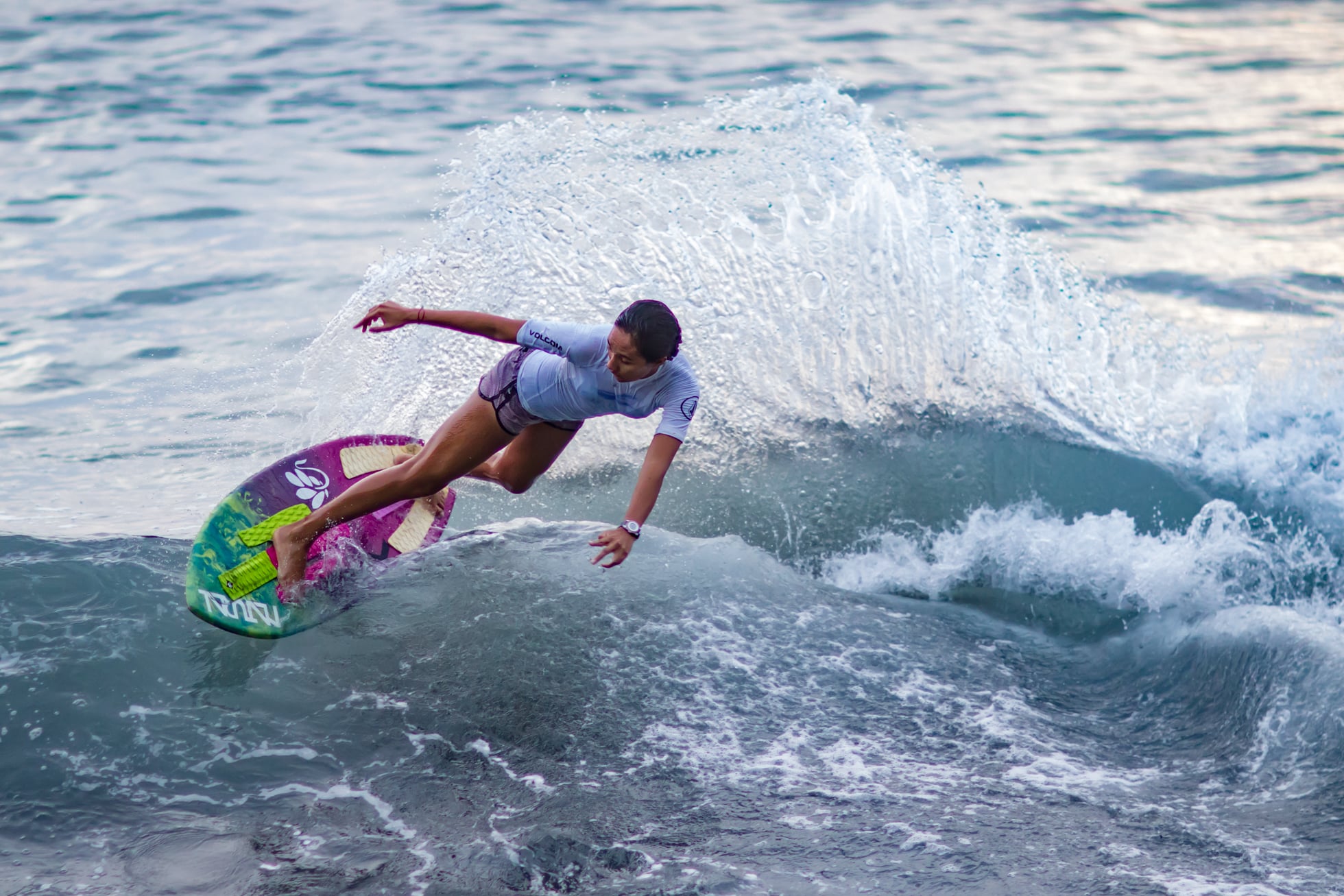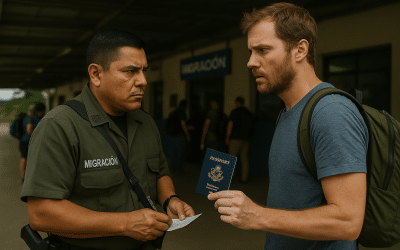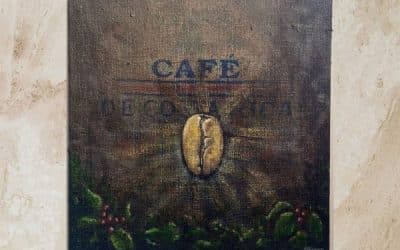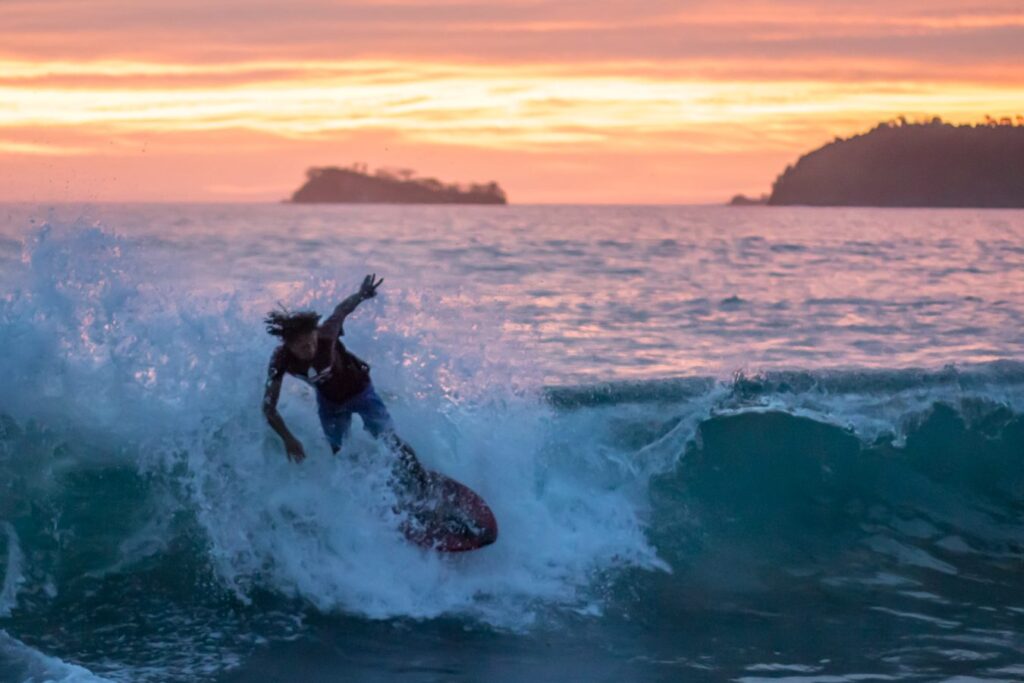
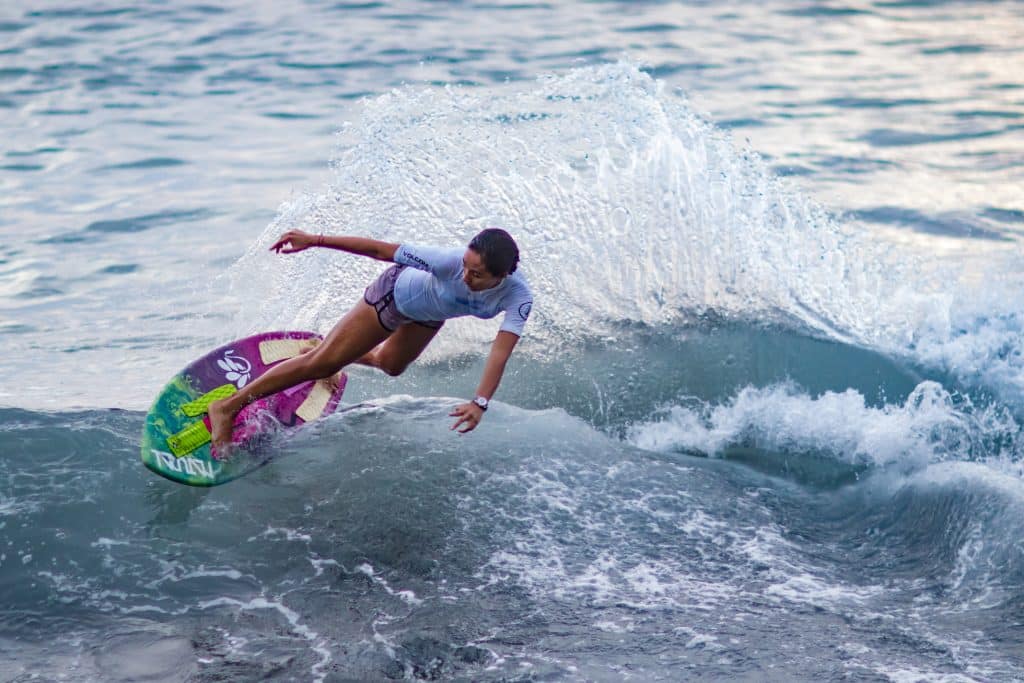
Skimboarding in Costa Rica: shorebreak art, fearless flight, pura vida fun
From Guanacaste’s honey-gold coves to the black-sand crescents of the Central Pacific, skimboarding is the Costa Rican sweet spot where adventure, culture and entertainment meet the ocean’s edge. It’s the sport you stumble across after a ceviche lunch, stay to watch because the tricks are outrageous, and end up trying between wildlife sightings and your next property viewing. Beach towns hum with small businesses—board shapers, lessons, smoothie shacks—while real estate agents point out how an active shoreline lifestyle adds value to coastal neighbourhoods. Come for the sun; stay for the food, the community and the skimboarders threading barrels a few metres from your toes.
What exactly is skimboarding?
Skimboarding is riding a finless, thin board across a shallow wash to meet a breaking wave and surf it back to shore.
-
Born on Laguna Beach shorebreaks, now thriving worldwide—including Costa Rica’s playful beaches.
-
Short, fast rides; huge style points; zero waiting out the back.
-
Ideal for quick sessions before breakfast or at golden hour.
How do you skimboard—step by step?
You sprint, drop the board onto a thin film of water, jump on, plane out, then carve or “wrap” onto an incoming face.
-
Run: Start above the wash as a new pulse rolls in.
-
Drop: Pitch the board flat—nose slightly up—to avoid pearling.
-
Slide: Commit weight evenly; soft knees, eyes forward.
-
Engage: Carve into the wave, then ride it shoreward with speed.
Why is Costa Rica perfect for skimboarding?
Warm water, consistent shorebreaks and a chilled beach scene make Costa Rica skim-friendly year-round.
-
Beaches: Playa Tamarindo sandbars, Flamingo’s small coves, Avellanas’ pushy shorebreak, Jaco’s lively wash.
-
Climate: Tropical temperatures mean rashguard, not winter rubber.
-
Access: Coastal towns offer rentals, lessons and post-session eats.
Which maneuvers should beginners and fans watch for?
From silky slides to airborne spins, there’s always a trick about to happen.
-
Wraps: Arcing turn that hooks you onto the unbroken face.
-
Big spins: Board and rider rotate together—clean landings score cheers.
-
360 shove-its: Board spins beneath you while your body stays aligned.
-
180s & re-entries: Snappy direction changes on the lip or in the wash.
-
Flatland set: Ollies, shove-its and tech combos on mirror-smooth rivulets.
What gear do you need to start?
A well-sized skimboard, grippy deck, and skin-saving extras keep sessions fun.
-
Board: Thin, finless; foam-core or wood. Size matches height/weight.
-
Traction: Wax or pads for front-foot grip and tail control.
-
Protection: Rashguard, reef-safe sunscreen; booties if reefs or shells.
-
Optional: Soft helmet for heavy shorebreak practice; small first-aid kit.
How do you stay safe on a powerful shorebreak?
Respect the timing, read the sandbars, and progress gradually.
-
Check: Depth, shore dump, run-out space and any rocks.
-
Time: Drop on a thin film—too deep and you’ll nose-dive; too dry and you’ll trip.
-
Bail smart: Step off sideways, protect ankles and knees.
-
Buddy up: Film each other, spot hazards and share water time.
Where does skimboarding fit in Costa Rica’s lifestyle, business and food?
Skimboarding threads through local life—from cafés to closing costs.
-
Lifestyle: Quick, high-stoke sessions before work or school.
-
Business: Lessons, rentals, local shapers, beach cafés and event days.
-
Real Estate: Active-shoreline pockets are magnets for buyers who value beach access and youth-friendly fun.
-
Food: Recovery fuel is easy—batidos, gallo pinto, fresh fish tacos and crisp chifrijo after sunset.
What’s the difference between wave skim and flatland?
Wave skim chases a pitching face; flatland turns the wash into a skatepark.
-
Wave: Speed run to a breaking lip; wraps, barrels, air tricks.
-
Flatland: Tech moves on thin water over hard-packed sand, using ollies, rails (where allowed) and creativity.
Can pros go big on skimboards?
Yes—tow-ins and heaving shorebreaks show the sport’s outer limits.
-
Waverunners can sling riders into larger faces for high-speed barrels.
-
Heavy shorebreak (think steep banks) rewards precision and bravery.
-
Spectator-friendly: the action happens metres from the sand.
What’s the skimboarding etiquette on busy Costa Rican beaches?
Look, listen, and leave no trace.
-
Space: Don’t sprint through swimmers or kids—wait for a clear lane.
-
Right of way: Whoever is set on a line keeps it.
-
Local respect: Greet, ask, and share; beaches are community spaces.
-
Environment: Pack out wax scraps; use reef-safe sunscreen.
Quick starter checklist for your first session
-
Board sized to you, deck waxed or padded.
-
Warm-up: ankles, hips, hamstrings.
-
Scan the bar: pick a launch zone and exit path.
-
Count the rhythm: run on the right pulse, drop flat, commit.
-
Celebrate small wins—clean slides beat wild flights early on.
FAQ
Is skimboarding hard to learn?
It’s easier to get moving than surfing, but timing the drop takes practice; most people get short, satisfying slides on day one.
Do I need waves to skimboard?
No—flatland lets you ride the wash and practise skate-style tricks on thin water.
What’s the best tide?
Mid-to-low with a thin film of water over firm sand often works best; local knowledge beats any rule.
Will I need lessons?
A one-hour lesson fast-tracks your drop, stance and safety—great value for beginners.
Where should I try in Costa Rica?
Start with friendly shorebreaks near lifeguards and rental huts—Tamarindo and Flamingo are popular, with plenty of instruction available.
Is it family-friendly?
Yes—kids can flatland in ankle-deep water while parents watch from the shade with a batido.
What about boards on planes?
Skimboards are smaller than surfboards; many airlines accept them as standard luggage—always check policies.
Any wildlife concerns?
Shuffle feet in murky water, give seabirds space, and avoid turtle nesting zones after dark.

